
Bird in Flight Prize ‘19 Finalist: Alexander
Michał Siarek, Poland
“Alexander” is a multi-platform documentary, first published as a book and a digital archive. Based on the relationship between politics, history and culture, revolves around the construction of a national myth in the (Former Yugoslav) Republic of Macedonia – a state with no name, fixated on a dispute with Greece about origins so distant that they may have never existed at all.
The very first thing I saw in the capital city of Skopje was the construction of a 25-meter tall figure of a warrior on horseback. As I found out later, the statue of Alexander the Great was the crown jewel to the nation-branding policy, likening the modern day Macedonia to its ancient archetype.
On February 13th, 2019 the country was officially renamed to the Republic of North Macedonia. All previous claims to its ancient provenience were dismissed. While the new government pushes for removal of previously built monuments and squares, me and my collaborators want to create an account to these transformations.

A cliff close to the peak of Solunska Glava, 2,540 m. Legend says that when the weather was good, men could see the city of Thesallonica in Northern Greece, but I can’t spot it through the cloud. The mountain range of Jakupica occupies the central part of the region where the ancient Macedonian empire of Alexander the Great is believed to have had its northernmost frontier. It takes a two days’ march to get to Skopje, capital of modern Macedonia.
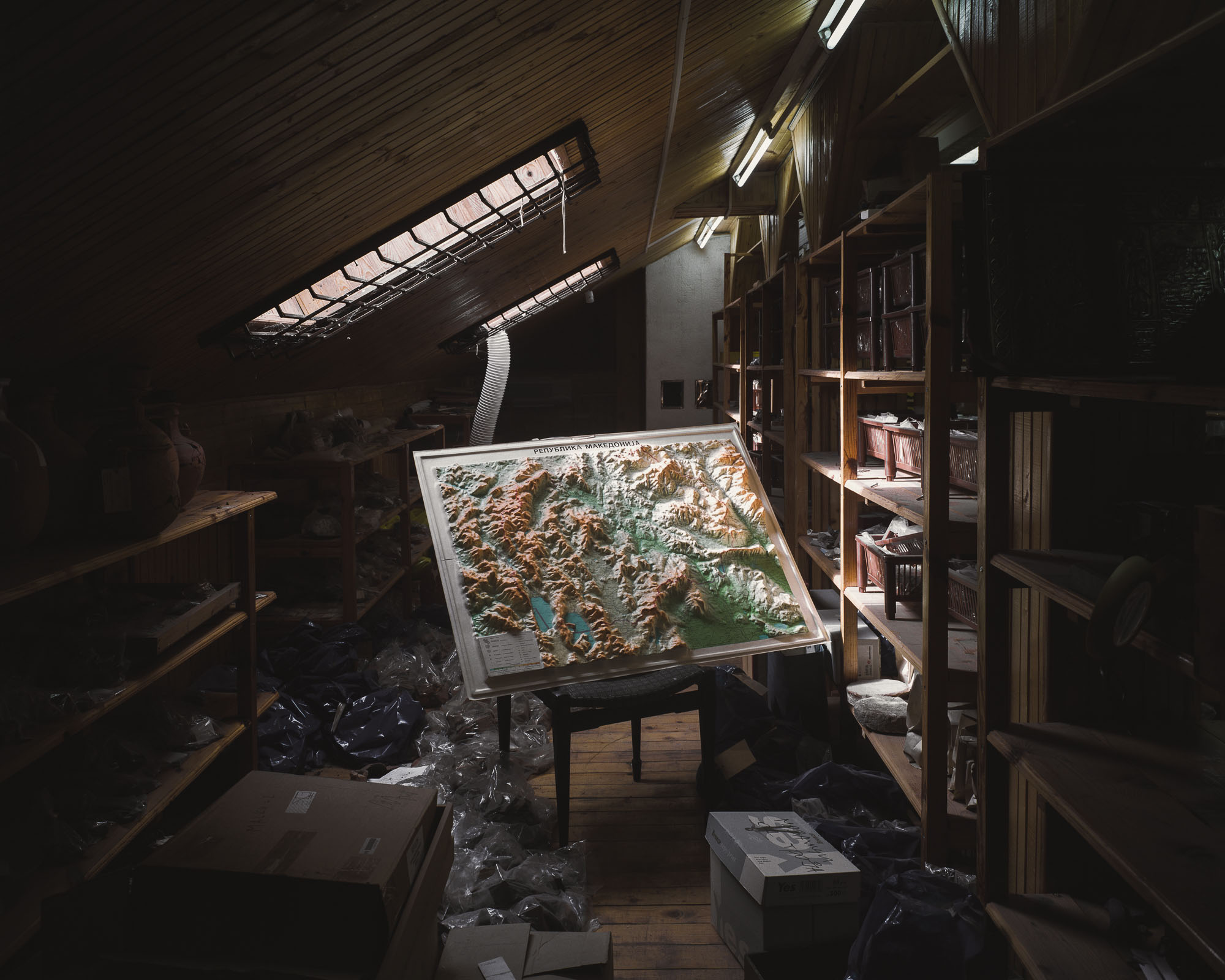
A deposit from the National Museum in Ohrid, dubbed “Troy” by its residents. My guide outlines the mystery of Alexander the Great’s final resting place while I look through artefacts and maps. The body of the almost mythical ruler was lost 2000 years ago, but his legacy still kindles the imagination of those who believe to be descended from his empire.
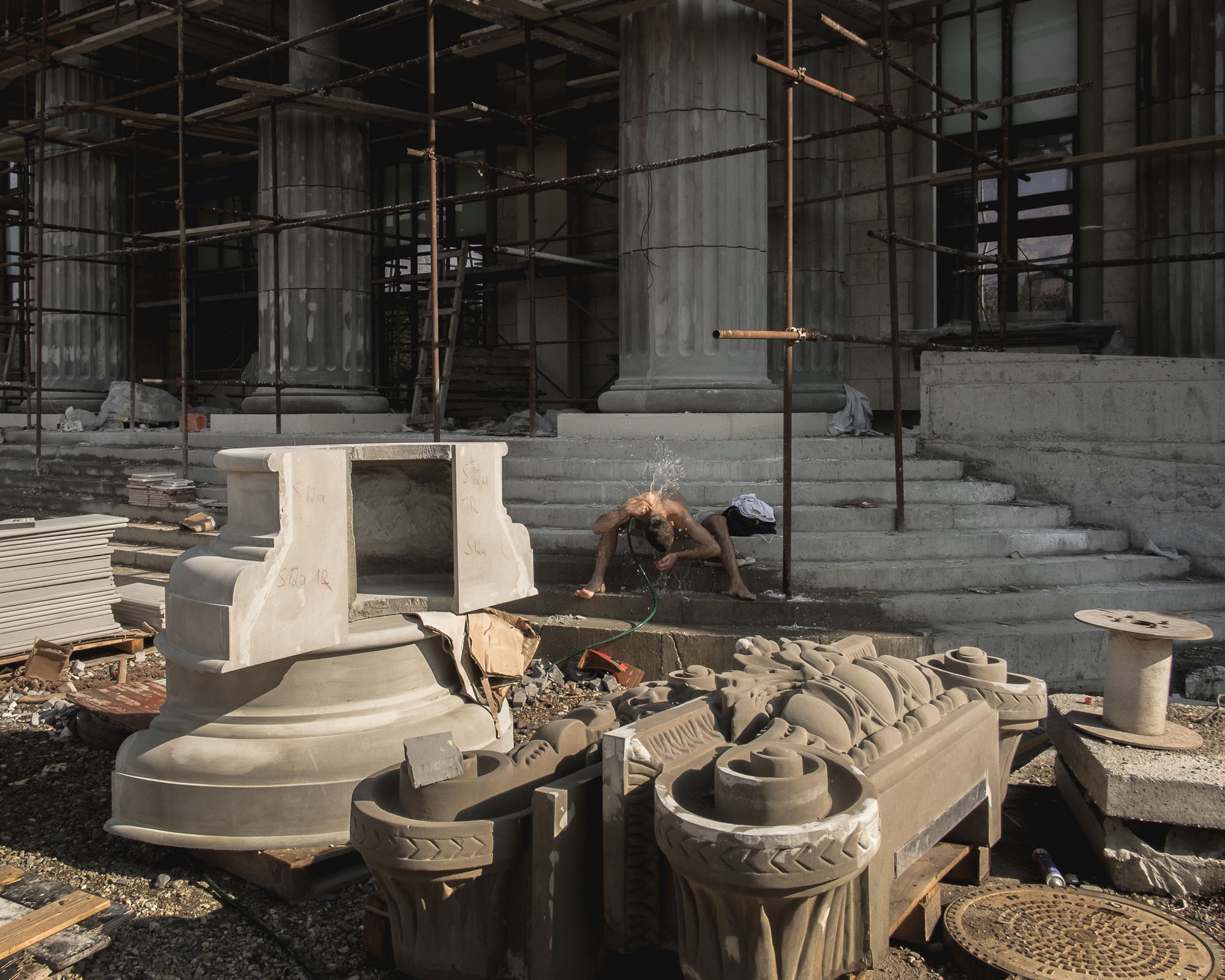
Construction site of the Supreme Court in Skopje. The capital of the Republic of Macedonia, Skopje has a turbulent past. Original settlement was established by Romans and ruined by natural disasters three times ever since. It is a perpetual construction site, and historical events can be traced by layers of rubble piling one on another. The latest, quasi-Baroque scheme called "Skopje 2014", is by far the most awkward and controversial.
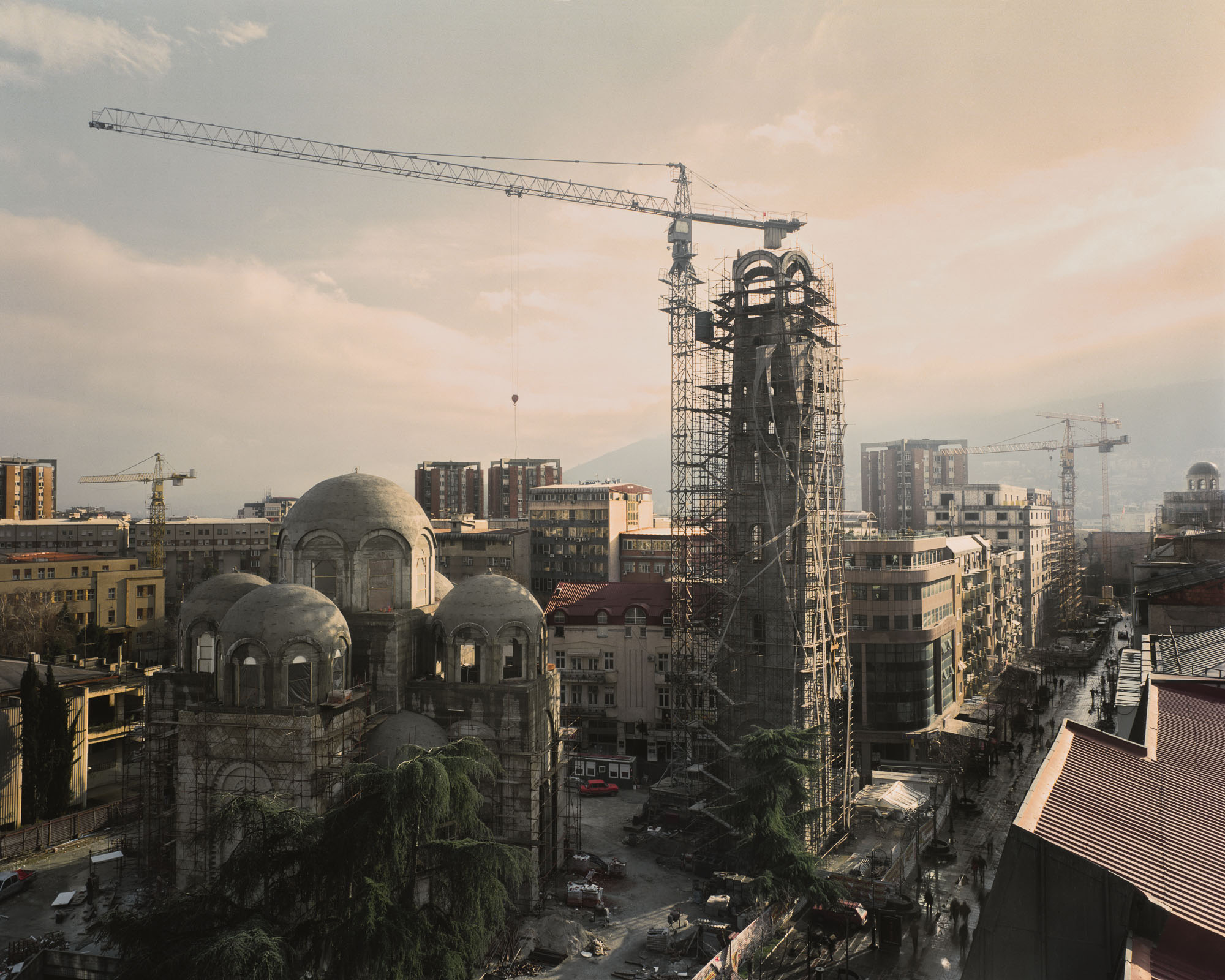
Panorama on construction of Church of St. Constantine and Elena. The city of Skopje has been razed and rebuilt many times throughout its turbulent past. On 26 July 1963, the area was struck by an earthquake that destroyed 80 percent of the capital, killing more than 1,000 people and leaving 200,000 more homeless. The international community rushed to help, and Skopje became a symbol of brotherhood and unity, mostly due to the fact that help arrived from behind both sides of the Iron Curtain.
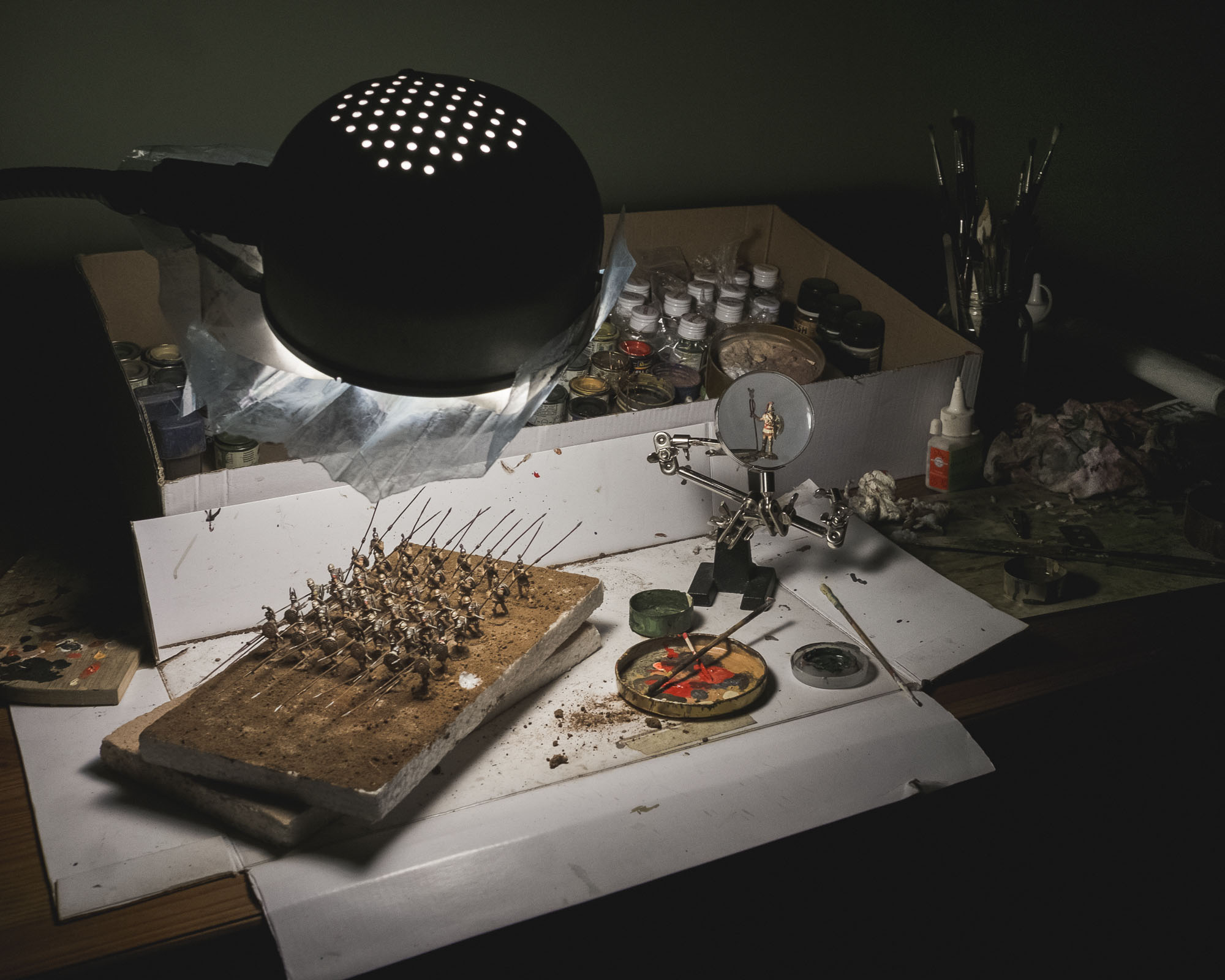
I eventually met numerous homegrown historians who spent hours with me, passionately drawing the link between the present and their long lost nobility. More than 2000 years after the empire’s collapse, we discussed origins so distant that they may have never existed at all. Yet generations of people in two different countries — and in multiple separate geographical areas — have already been born as Macedonians, making it a concept difficult to grasp.
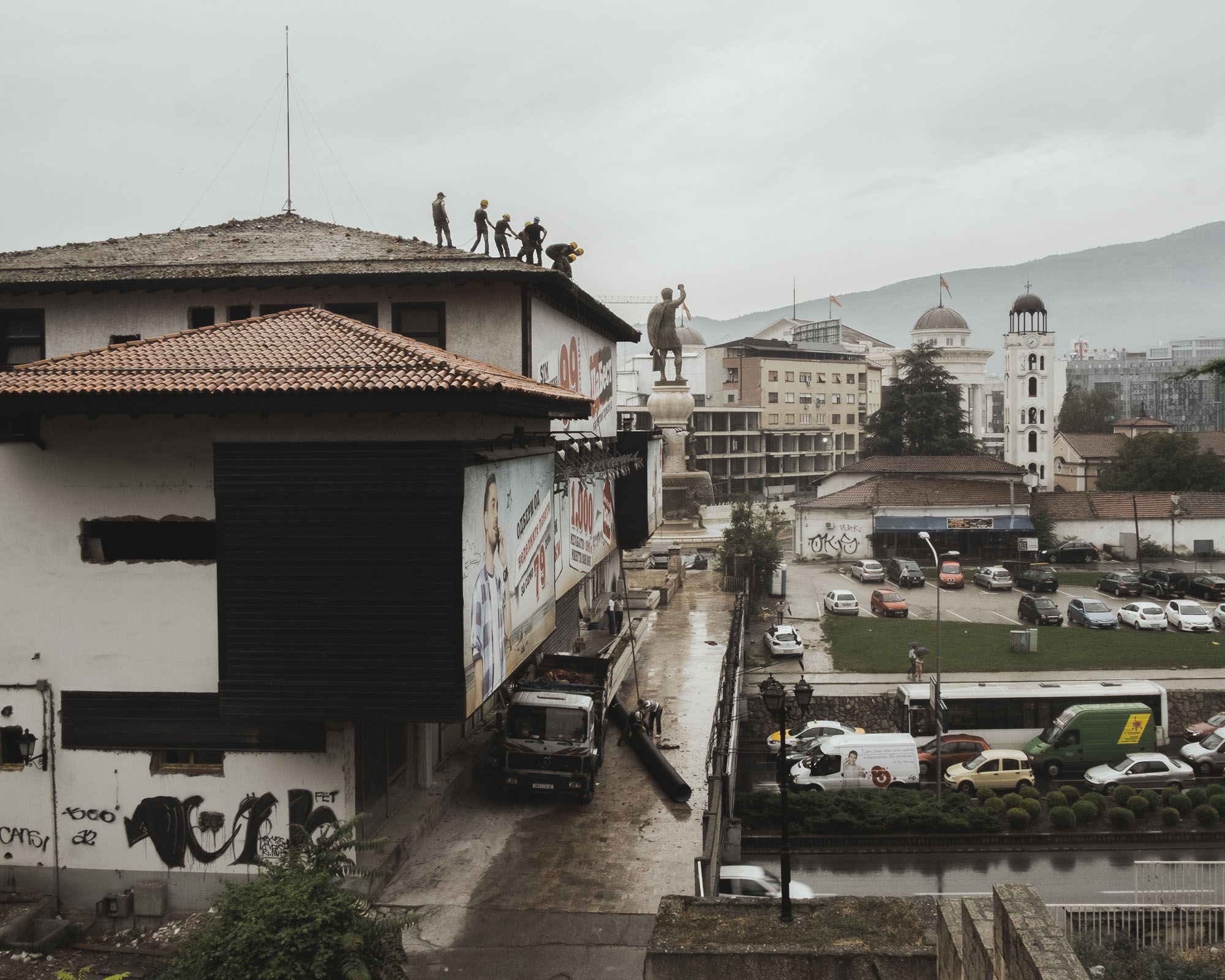
A newly funded monument of Philip II, father to Alexander the Great. One of the objectives within "Skopje 2014" was to erect monuments to all significant figures from Macedonian history. Within just four years the strict city center was decorated with more than a hundred figures, varying from ancient rulers and Macedonian founding fathers, through writers, philosophers and most loved Macedonian pop singer to a selection of replicas, i.e. famous Charging Bull from Wall Street.
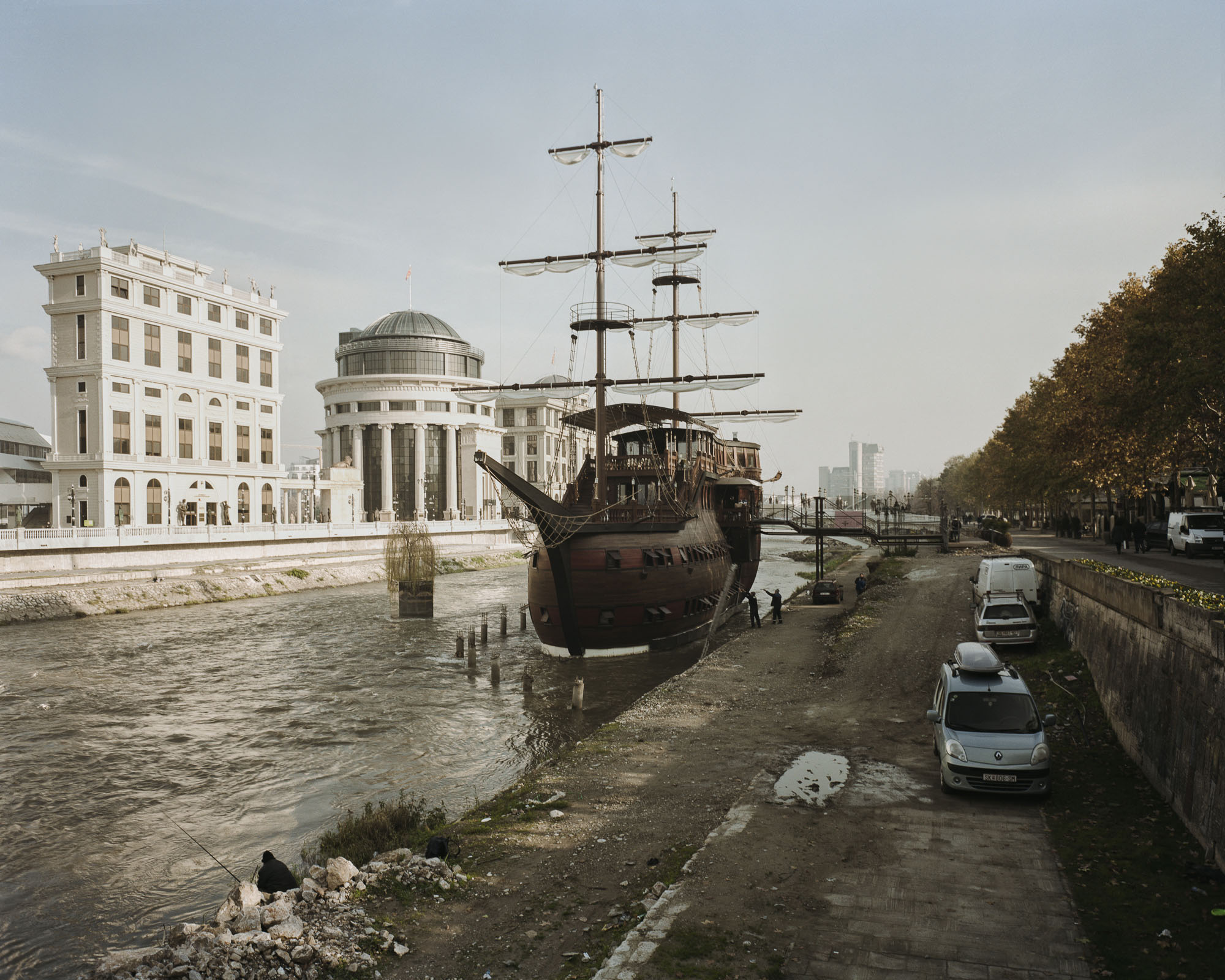
Three grandiose tall ships built in the bed of Vardar River to serve as restaurants and hotels belong to most ridiculed objects in the city centre, as Vardar river is relatively shallow and the town itself is not connected to an open sea. Two of of three ships are now abandoned and the new mayor of Skopje has announced their demolition.
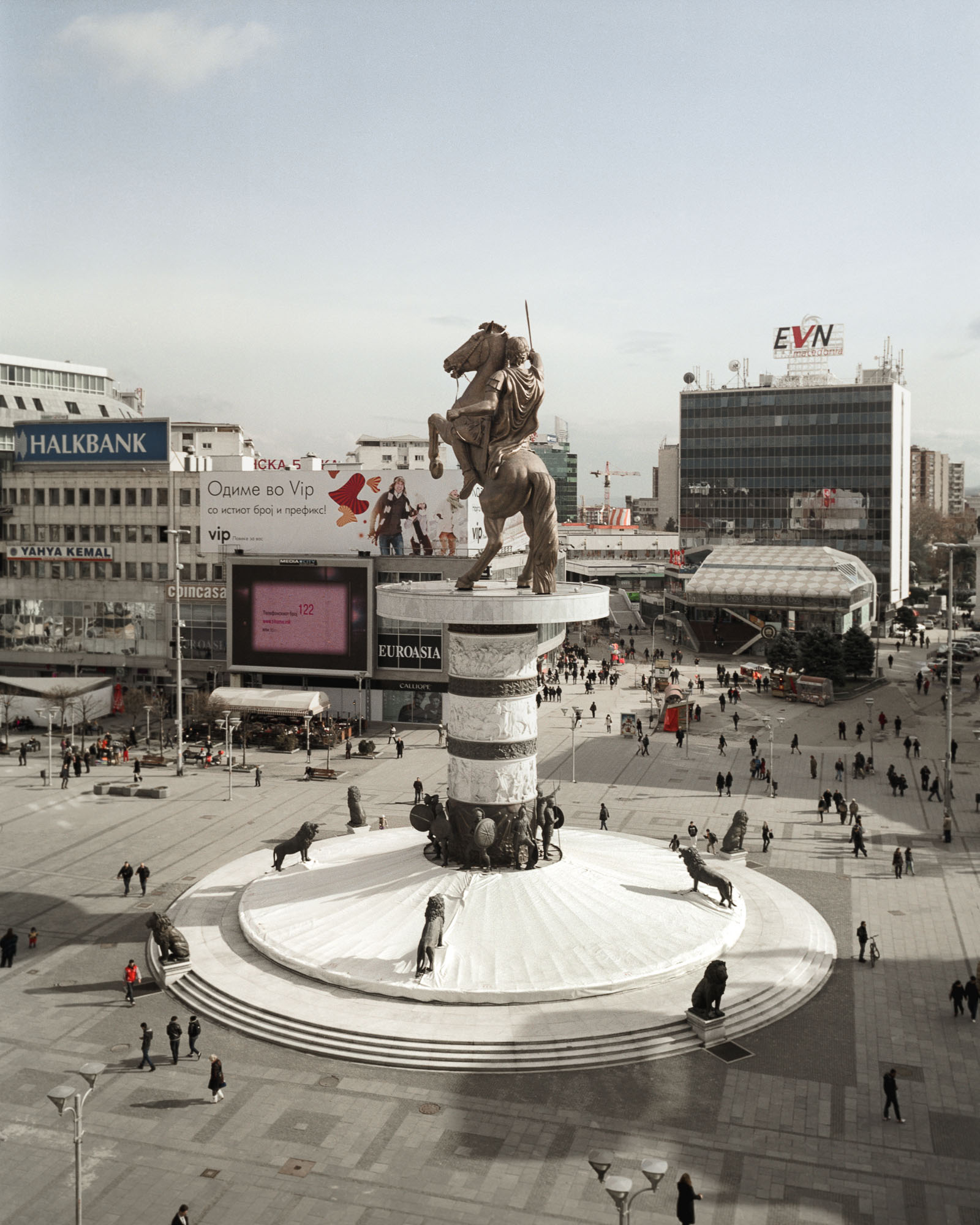
Skopje’s most significant new monument — and the unofficial symbol of Macedonia’s pursuit of new identity — is the infamous “Warrior on a Horse”. The unveiling of the 24-meter monument with a fountain took place in 2012 to commemorate the 20th anniversary of the country’s independence. This symbolic gesture reignited a long-running conflict with Greece over the statue’s uncanny resemblance to established images of Alexander the Great.
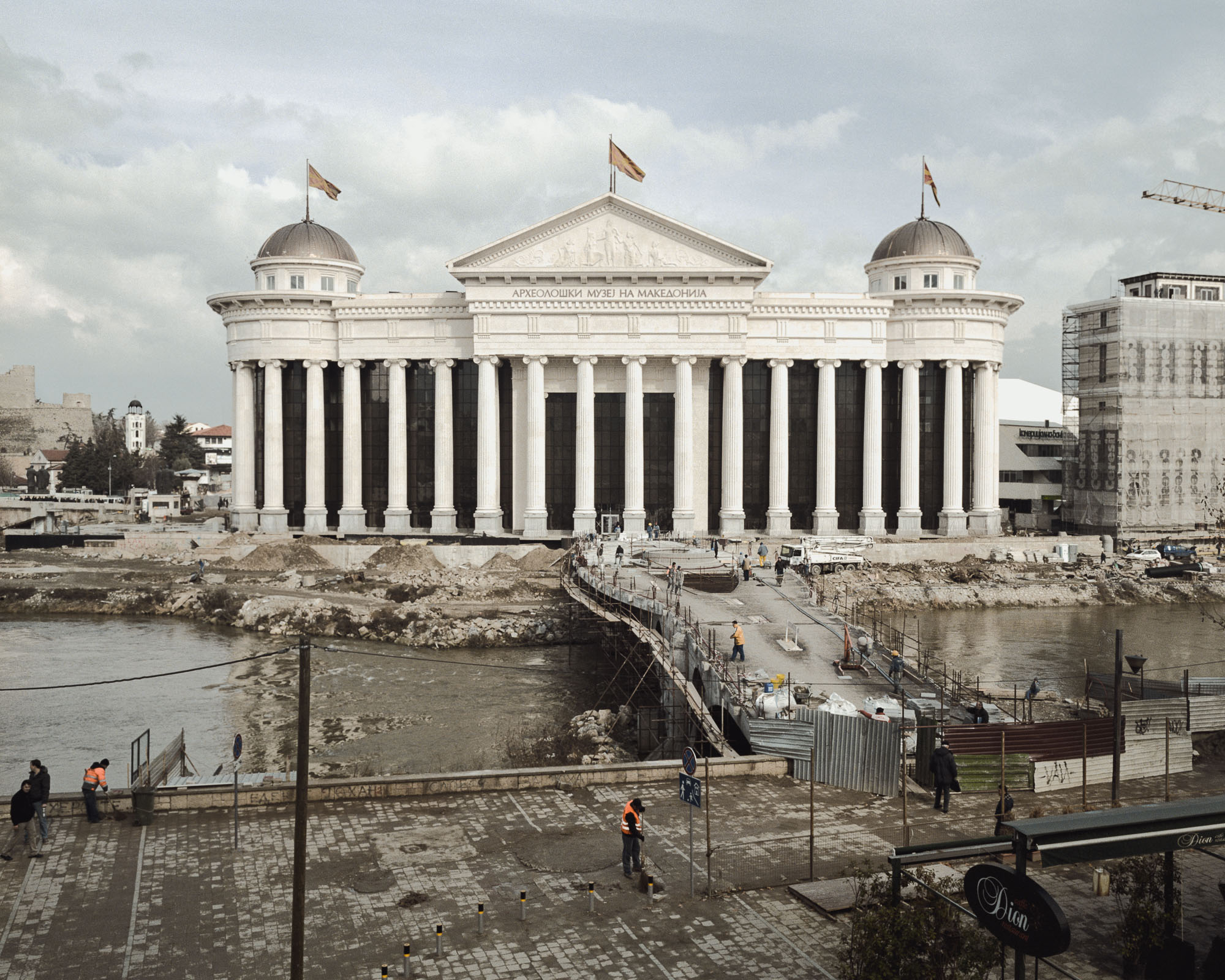
The construction site of the Archaeological Museum of Macedonia, one of the most spectacular and symbolic objects within the revamp. Its author, Slobodan Zhivkovski explained in an interview his "[...] main aim was to capture those two eras, those two architectural styles. The foundation — classical antique — and the contemporary. [as he] want to convey to the citizens that [Macedonian] building tradition has deep roots, that it has spanned at least two and a half millennia."
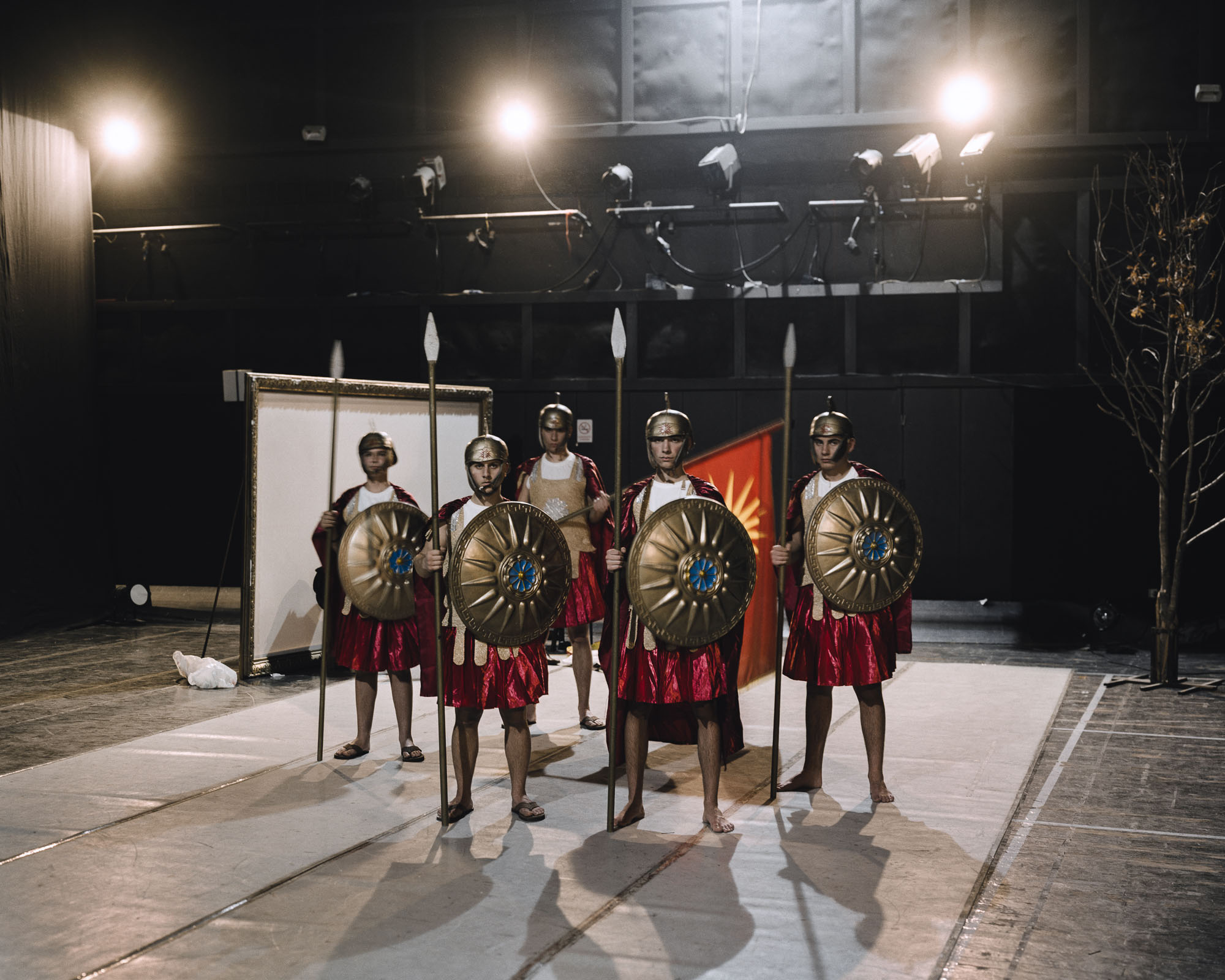
Boys from Nikola Vapcarov Folk Group from Dolno Lisiche before the annual performance for parents in the National Opera and Ballet.
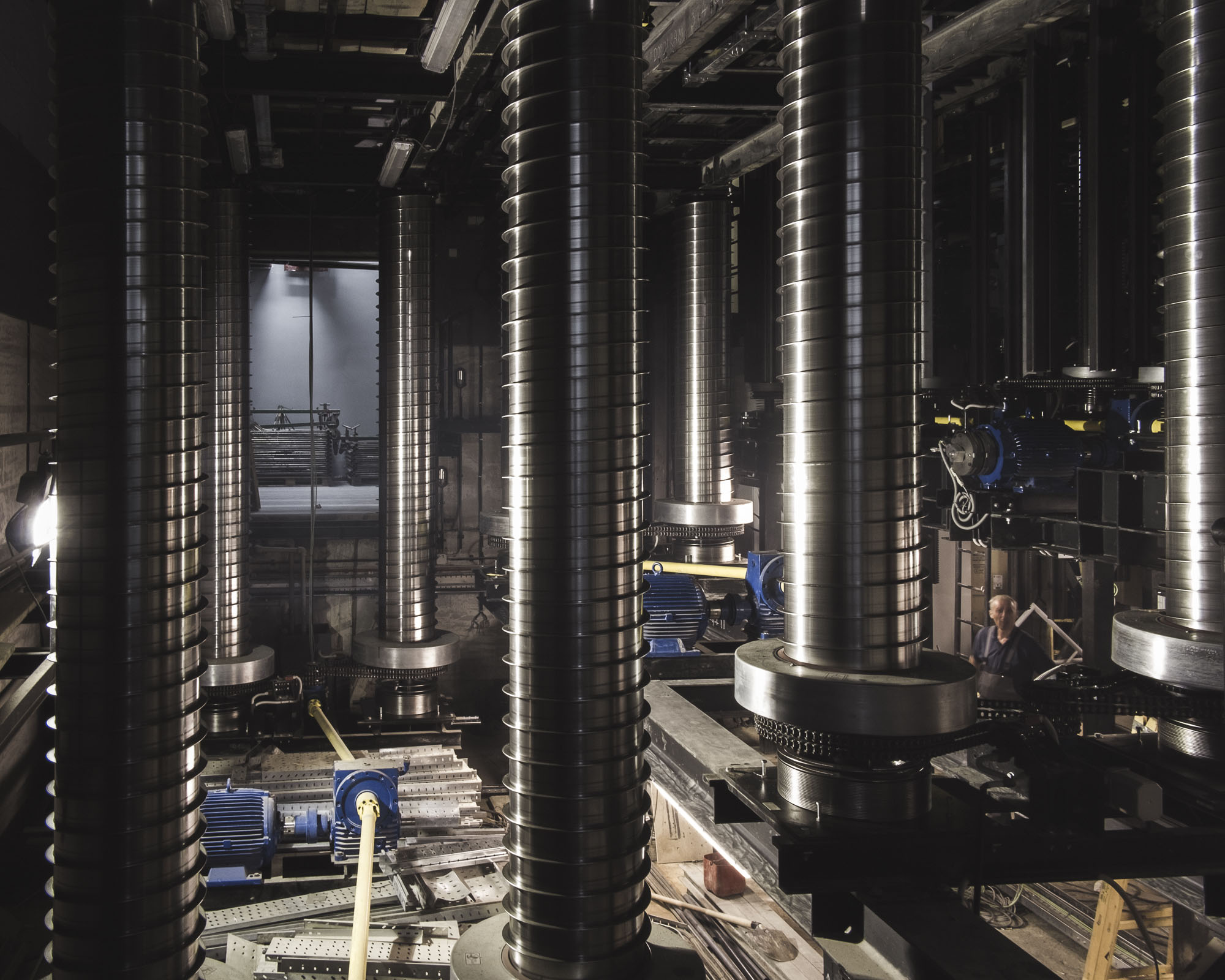
Construction of the stage lift in the Macedonian NationalTheatre. The original theatre was razed by the earthquake in 1963 and new building was erected and equipped as a part of project Skopje 2014.

This figure of Alexander has been removed from the airport, leading to the change of its name to a more neutral “Skopje International Airport”.
Others project materials

New and best













